Tag: training
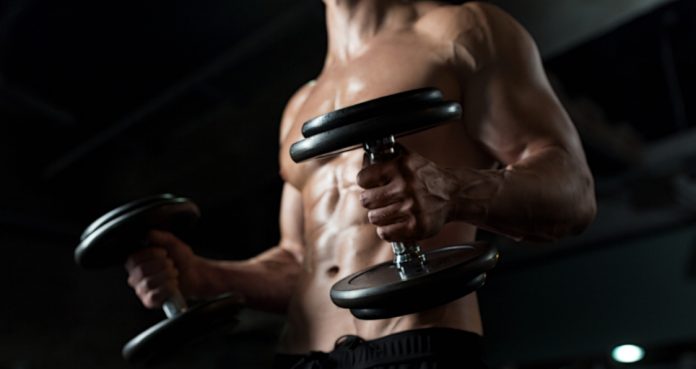
6 Best Conditioning Finishers You Should Be Doing At The End of Your Workouts
6 Best Conditioning Finishers For Definition
Have you ever wondered why your muscles don’t look as striated as the guys on Instagram? It’s because the pros do things differently, and we’ll be letting you in on their secrets today.
If you leave the gym without sore muscles, you’re leaving gains on the table. Your muscles should be filled with blood and lactic acids by the end of your workouts. Performing the six exercises at the end of your workouts will make your muscles scream for mercy.
Leg Extensions
Most people perform the leg extensions at the beginning of their leg workouts. You should prefer doing isolation exercises as your finishers for better pumps as compared to the compound lifts.
Keep the reps slow and controlled and focus on squeezing your quads. Posing and flexing your muscles between sets can help in amplifying the pumps and improving the mind-muscle connection.
Cable Crossovers
Cable crossovers are an incredibly effective chest exercise. If you want to improve your inner pecs and want more striations, cable crossovers should be a part of your exercise arsenal.
If you want a nastier pump, pause at the top of the movement and squeeze your muscles. You can add variation in the exercise by adjusting the height of the pulley. Setting the pulley at your chest height will target your mid-pecs and high pulley will work your lower chest.
Cable Ground Pulley
It can be relatively hard to achieve a pump in the back. While the deadlifts and barbell rows can be great to build size in the back, you need isolation exercises to build definition and conditioning.
Some people make the mistake of swinging back and forth while performing the exercise. Using momentum can take off the tension from your back and put it on the secondary muscles like your arms and shoulders.
Machine Preacher Curls
Arnold Schwarzenegger helped put the bicep peak on the front cover of magazines. It was not late after that people started comparing biceps with mountain peaks. Developing the bicep peaks requires following a full range of motion.
If you don’t have access to a preacher curl machine at your gym, you can use a preacher bench and place it in front of a cable pulley. If you don’t have a preacher bench, use an incline bench, and if you don’t have an incline bench, find a new gym.
Ground Skullcrushers
The ground skullcrushers are one of the most underutilized exercises. While performing the lift, you need to lower the weights until they hit the floor. Keep your lower arms parallel to each other and perpendicular to the floor. Keep your elbows locked at an angle so they are slightly behind your head.
You could use a barbell or dumbbells to perform the exercise. Using the dumbbells will give you a better range of motion which can result in a better pump if you perform the lift with the right form.
Cable Side-Lateral Raises
No V-taper can be deemed aesthetically appealing without wide boulder shoulders. Shoulders are one of the least trained muscle groups and most people train them for the sake of it.
Using the cables can help keep constant tension on your shoulders. Place the cable pulley in a low position and raise your arms until they are parallel to the floor. Elevating your arms above your shoulders will take the tension off the delts.
Which is your favorite finisher exercise? Let us know in the comments below. Also, be sure to follow Generation Iron on Facebook and Twitter.
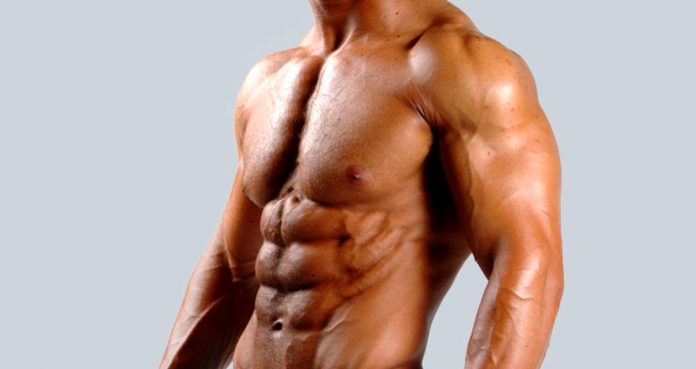
The Benefits of Stretching and Why You Should Stretch Before, During & After Your Workouts
Why Stretch?
Almost everyone to some extent knows and understands the importance of stretching, especially in bodybuilding but still don’t do it. Stretching is one of the most overlooked aspects of training and most people treat it as accessory work.
In this article, we’ll be focusing on fitness and bodybuilding athletes and the benefits of stretching for them. Many people think stretching is only for yoga practitioners and does nothing for athletes.
The stretching exercises athletes perform before, during and after workouts are meant to stretch the connective tissues which surround the muscles. These connective tissues are responsible for holding the muscles together and are the resistance that stops the muscles from expanding.
How Connective Tissues Work
The connective tissues form the fascia which tightly hugs and acts as a wall around the muscles. These walls are meant to stop the muscles from deforming while you go about doing your work.
While the fascia does a great job of keeping the muscles together, it acts as a hindrance for bodybuilders who want their muscles to grow bigger. The pump you get during a workout is your muscle tissues pushing against the fascia because of the blood which enters into the muscles and gives you a tight feeling.
Benefits of Stretching
While you could stretch at any time throughout the day, the best time for an athlete to stretch is during the workouts. Stretching after a workout is a great way to end your training and can help with recovery.
Before a Workout
Stretching before a workout won’t do a lot for you and is only helpful in warming up the muscles. You don’t have to stretch out all the muscles before your workout. Stretching only the target muscles is enough to make the most of your workouts.
During a Workout
Stretching during training can be incredibly effective for muscle growth. Posing and stretching after a working set helps in building a mind-muscle connection which combined with visualization techniques can improve the shape of your muscles.
Stretching in between sets also expands the fascia and pulls the connective tissue and muscles apart which enhances muscle separation and definition.
After a Workout
At the end of a good workout, your muscles should be filled with blood and lactic acid and should be feeling tight and pumped. Post-workout is a great time to stretch as the connective tissue is already being stretched by the excess blood in your muscles. Manually stretching the muscles at this point increases the muscle fiber growth potential.
Types of Stretching
Active Stretching
Active stretching involves using weights as resistance in the exercises which work the muscles in the fully stretched range of motion. To emphasize the stretch in these exercises, you need to hold the weights at the bottom of the movement for a couple of seconds.
Some examples of active stretching are dumbbell pullovers, flyes for chest, preacher curls for biceps, barbell lunges for quads, barbell stiff-legged deadlifts for the hamstrings, and standing calf raises for the calves.
Static Stretching
Static stretching is the traditional form of stretching which most people are familiar with. In static stretching, you use your own bodyweight to stretch the muscles. You stretch your muscles to a point of discomfort and hold the position for 30-60 seconds.
For example, to stretch your hamstrings, maintain a slight bend in your knees and touch your toes with your fingers. Hold the position until the discomfort in your hams reduces. Make sure you don’t push yourself too hard in the beginning as there are high chances of muscle pulls and tears.
Stretching in between sets takes no extra time and stretching after a workout can take 5-10 minutes. The benefits you’ll reap will far outweigh the time you’ll be putting in. We encourage everyone to incorporate stretching into their training routines.
How often do you stretch? Let us know in the comments below. Also, be sure to follow Generation Iron on Facebook and Twitter.
*Header image courtesy of Envato Elements.

5 Exercises For Building A Cobra Back
5 Exercises For Building A Cobra Back.
Your back is the biggest muscle group after your legs. It can also be one of the hardest muscle groups to train since you can’t see your back directly in the mirror and hence it can be comparatively hard to establish a mind-muscle connection.
If done right, a good back workout should be as grilling as a brutal leg workout. You should be running on fumes when you’re done with your back workout. Building a cobra back can take a lot of effort, patience, and persistence. It is no surprise only a few people have a jacked back.
1. Pull-Ups – 50 Reps
You need to have a broad back if your goal is to build a shredded back. Pull-ups are one of the most efficient exercises when it comes to building a wide back and giving you a V-taper. Arnold performed 50 reps of this exercise at the beginning of his back workouts.
There are no fixed number of sets you need to complete these 50 reps in. Try to take as few sets as possible. As you get better at this exercise, you can start using weights to make it harder for yourself. If you’ve just started working out, use a pull-up assistance machine or ask for a spot from someone at your gym.
2. Deadlifts – 3 Sets 5 Reps
Deadlifts are a complete back builder. It’s a compound (multi joint) exercise which works your entire body. It is better to perform this exercise at the beginning of your back workout when you’re at your strongest.
You don’t need to do a lot of reps to get the most out of deadlifts. Lifting heavy weights with an explosive movement can get you better results. Deadlifts can help you gain muscle mass and strength which can make you stronger at every other exercise.
3. Dumbbell Bent Over Row – 3 Sets 12 Reps
While overhead pulling movements can add to the width of your back, rowing movements will add the much-needed thickness. You need to have a combination of both these movements to build a Cobra back.
Dumbbell bent over rows help isolate your back and will give you an incredible pump. Have a full range of motion to recruit all the muscle fibers in your back. Hold and squeeze your back at the top of the movement.
4. Lat Pull Downs – 3 Sets 12 Reps
Lat pull downs are incredibly effective at targeting your lats. Many people make the mistake of using momentum while performing this exercise. Make sure you don’t swing yourself and use momentum to lift the weights.
Try bringing the bar close to your chin while sitting straight. Hold and squeeze your lats at the bottom of the movement. Use lifting gear like straps to eliminate recruiting your forearms. Doing this will also help in lifting more weight and performing more reps.
5. Ground Pulley – 3 Sets 12 Reps
The ground pulley is a great exercise when it comes to developing a V-taper. Use weights you can comfortably lift for 12 reps. Lifting heavier weights can lead to leaning way too far at the bottom and the top of the movement.
Keep your reps slow and deliberate to completely annihilate your back. You can try variations of this exercise by using different handle bars. Each new grip will target your back from a different angle and will recruit different muscle tissues.
Which is your favourite back exercise? Let us know in the comments below. Also, be sure to follow Generation Iron on Facebook and Twitter.
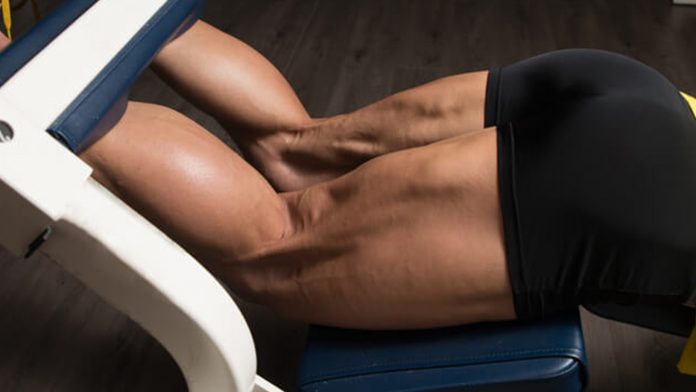
The Ultimate Hamstrings Workout
Follow This Workout For Shredded Hamstrings
Hamstrings are one of the weakest muscle groups for most people. It is hard to establish a mind-muscle connection with your hamstrings since they are at the back of your legs and you can’t see them in the mirror while training.
Hamstrings are one of the most stubborn muscles groups. If you have genetically weak hamstrings or are lagging in the department, you need to show them some extra love. Muscular hamstrings can significantly add to the size of your legs.
Leg Curls – 3 Sets 15 Reps
Starting with an isolation exercise is a good idea as it pre-exhausts your muscles. By pre-exhausting your muscles you can achieve the same result while lifting relatively lighter weights.
Using a cable leg curl machine helps you in maintaining constant tension on your hamstrings throughout the movement. You don’t need to go super heavy while performing this exercise. Pause and squeeze your hams at the top of the movement.
2. Romanian Deadlifts – 3 Sets 10 Reps
Romanian deadlifts are a compound exercise and will help you in building strength and size in your hamstrings. This exercise is different from the orthodox deadlifts as these primarily target your hamstrings, while the normal deadlifts target your back.
Keep a slight bend in your knees while performing the Romanian deadlifts. Think of your hams as chains used for lowering and lifting your back. Push back your hips while lowering the weights so all the tension is placed on your hamstrings.
3. GHD Hyperextensions – 3 Sets 15 Reps
GHD hyperextensions are an exercise brought into the limelight by CrossFit. Maintaining a full range of motion is key to performing this exercise. If you find the bodyweight version of this exercise to be easy, use weights to add resistance.
If you don’t have an access to a GHD bench at your gym, you can use a flat bench for this exercise. Place your knees at the top of the bench and ask someone to sit on your calves while you perform the exercise.
4. Jefferson Squats – 3 Sets 12 Reps
[embedded content]
You have been missing out on a lot if you’ve never tried this exercise. Jefferson squats will set your hams and glutes on fire. The Jefferson squats might look a little awkward at first, but you will dig the results.
It is a wide-stance deadlift where you hold the barbell between your legs with one hand in front of your body and one hand behind it. The better you become at doing Jeffersons, the more proficient you will be at squatting.
5. Good Mornings – 3 Sets 12 Reps
Good mornings are an excellent finishing exercise for your hamstrings. Most people make the mistake of going too heavy on this exercise. Use weights you can handle while keeping constant tension on your hams.
Maintain a slight bend in your knees and an arch in your back. Push back your hips on the way down and squeeze your hams at the bottom of the movement. Don’t rest by standing upright. Maintain constant tension by stopping a couple of inches from the starting point.
Who do you think has the best hamstrings? Let us know in the comments below. Also, be sure to follow Generation Iron on Facebook and Twitter.
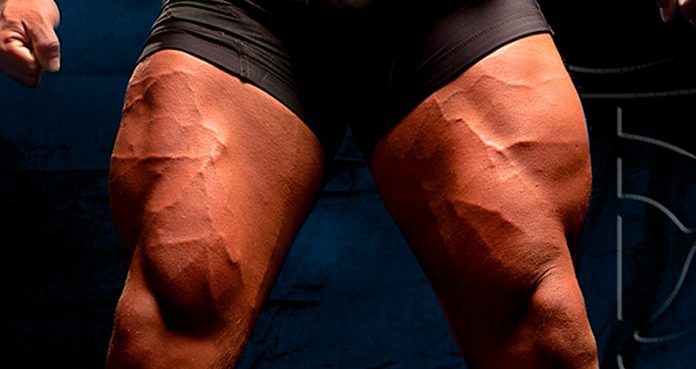
The 4 Effective Leg Building Exercises Which No One Does
Build Monster Legs With These Exercises
A pair of shredded legs is what separates the men from the boys. Most people stick to the same exercises while training their legs and leave gains on the table. All leg exercises aren’t created equal. Some exercises target your wheels better than the others.
A normal leg training session consists of squats, leg presses, extensions, and curls. While there is nothing wrong with these exercises, there are some exercises which can help you in changing your routine and build size and definition in your legs.
Performing the same exercises over and over again can make you hit a plateau. Adding new exercises to your workouts will shock your muscles and will help you in breaking the plateau. Every exercise targets your muscles in a different way which is great for ensuring an overall muscle development.
Platz Hack Squats
The legendary Tom Platz had one of the nastiest legs in the bodybuilding history. He came up with this variation of the hack squats. The Platz hack squats target your outer quad sweep and the teardrop in your quads.
Stand with your heels joined together and your toes pointing outwards. Perform a squat while pushing your knees down and forward. Your heels will come off the base as you squat. As you start pressing up, push onto the outer part of your feet. Doing this will transfer the tension onto the outer quad sweep.
Sissy Squats
Sissy squats have been around since the 1960s, but chances are you’re hearing about them for the first time. Don’t let the name of the exercise fool you. The sissy squats are a great finisher and will fill your quads with lactic acid.
If you’re performing this exercise for the first time, hold onto a squat rack around the hip level or slightly higher. Take a shoulder-width stance and slowly start to lower yourself by bending your knees and pushing them down and forward.
Your back will fall backward while you’re on the descent. Your heels will come off the ground as your knees go down. At the bottom of the movement, your quads should be at least parallel to the floor. Return to the starting position and repeat for reps.
Good Mornings
Good mornings are a compound (multi-joint) exercise which works your hamstrings. Most people make the mistake of going too heavy on this exercise. Good mornings are an exercise which requires a mind-muscle connection.
Stand with a barbell placed across the rear of your shoulders. Keep a slight bend in your knees and an arch in your back throughout the exercise. Push your hips back as you bend your back until it is almost parallel to the floor. Think of your hamstrings as chains used to lower and lift your back.
Step-Ups
Step-ups are a unilateral functional exercise which helps you in training one leg at a time. If you have a weaker leg, unilateral exercises can help you fix this problem as the stronger leg can’t compensate for the weaker one.
Step-ups have many variations and can be adjusted according to your fitness level. Hold a dumbbell in each hand and use your right leg to step onto a knee-to-hip high platform. Bring your left leg up and stand on the platform, then step back with left leg to return to the floor. Both your feet should be on the floor after you step back. Repeat the movement with your left leg and alternate between your legs for the desired reps.
Which day of the week do you train your legs? Let us know in the comments below. Also, be sure to follow Generation Iron on Facebook and Twitter.
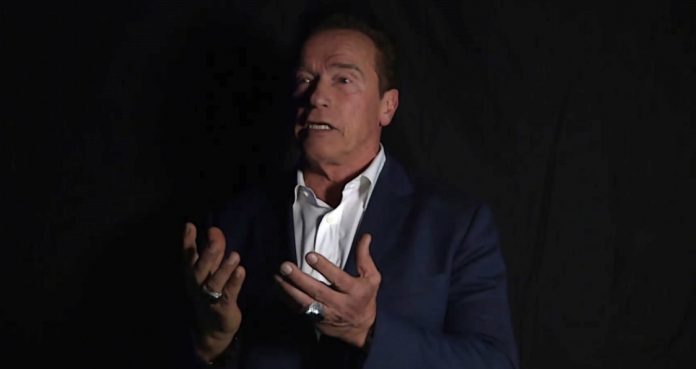
Arnold Schwarzenegger Quotes to Keep You Motivated
Arnold Schwarzenegger Quotes to Keep You Motivated
It’s safe to say Arnold brought bodybuilding to the mainstream. If it was not for Arnie and his Greek god-like physique in Conan the Barbarian, Terminator, Commando etc., bodybuilding probably wouldn’t have flourished throughout the world.
Who would have thought a guy from Austria would end up marrying a Kennedy and become the Governor of California? The Governator is no ordinary human. His thought process, hard work, discipline, and visualization techniques have helped him get where he is. When Arnie talks, we should all listen.
Arnold Schwarzenegger Rules of Success
Make it Count
“The last three or four reps is what makes the muscle grow. This area of pain divides the champion from someone else who is not a champion. That’s what most people lack, having the guts to go on and just say they’ll go through the pain no matter what happens.”
Chase the Pump
“Not many people understand what a pump is. It must be experienced to be understood. It is the greatest feeling that I get. I search for this pump because it means that that my muscles will grow when I get it. I get a pump when the blood is running into my muscles. They become really tight with blood. Like the skin is going to explode any minute. It’s like someone putting air in my muscles. It blows up. It feels fantastic.”
Resistance is Your Friend
“The resistance that you fight physically in the gym and the resistance that you fight in life can only build a strong character.”
If It’s Not Fun, You’re Doing it Wrong
“Bodybuilding should be fun because you get a feeling of satisfaction which is very hard to explain. A bodybuilder knows when he pumps up his muscles it means growth. The muscles grow. So, therefore, he knows when he pumps up well, that is progress. And that satisfies him because he feels the progress in his body. Therefore the pump feels good. It’s actually the best feeling a bodybuilder can have. It’s a difficult thing to explain. Like sometimes we joke around and we get a good pump and we say you have to admit that a good pump is better than coming. Somebody off the street wouldn’t understand that, but sometimes a pump is the best feeling you can have.”
“The best activities for your health are pumping and humping.”
Shock Your Muscles
“A beginner does eight repetitions of a certain exercise with his maximum weight on the barbell. As soon as it hurts, he thinks about stopping. I work beyond this point, which means I tell my mind that as soon as it starts aching it is growing. Growing is something unusual for the body when you are over eighteen. The body isn’t used to ten, eleven, or twelve reps with a maximum weight. Then I do ten or fifteen sets of this in a row. No human body was ever prepared for this and suddenly it is making itself grow to handle this new challenge, growing through this pain area. Experiencing this pain in my muscles and aching and going on is my challenge. The last three or four reps is what makes the muscles grow. This area of pain divides a champion from someone who is not a champion. That’s what most people lack, having the guts to go on and just say they’ll go through the pain no matter what happens. I have no fear of fainting. I do squats until I fall over and pass out. So what? It’s not going to kill me. I wake up five minutes later and I’m OK. A lot of other athletes are afraid of this. So they don’t pass out. They don’t go on.”
Stay True to Yourself
“What I’m doing is the thing I want to do. I don’t care what other people think. If the rest of disagrees and says I shouldn’t waste my time, I still will be a bodybuilder. I love it. I love the feeling in my muscles, I love the competition, and I love the things it gives me. I have never really had to work in my whole life. I’ve never had an eight to six job. I’ve always made good money. I’ve traveled all over the world competing and giving exhibitions. I‘ve made a profession out of a pastime, which perhaps only five percent of the population can do. The other ninety-five percent are frustrated office workers, working for someone else. I’m totally independent. So, I…..feel…if I would live again or if I would be born again, I would do exactly the same thing.”
Never Be Afraid of Failure
“Just like in bodybuilding, failure is also a necessary experience for growth in our own lives, for if we’re never tested to our limits, how will we know how strong we really are? How will we ever grow?”
Be the Sculptor of Your Physique
“You don’t really see a muscle as a part of you, in a way. You see it as a thing. You look at it as a thing and you say well this thing has to be built a little longer, the bicep has to be longer, or the tricep has to be thicker here in the elbow area. And you look at it and it doesn’t even seem to belong to you. Like a sculpture. Then after looking at it a sculptor goes in with his thing and works a little bit, and you do maybe then some extra forced reps to get this lower part out. You form it. Just like a sculpture.”
Struggles Develop Real Strength
“Strength does not come from winning. Your struggles develop your strengths. When you go through hardships and decide not to surrender, that is strength.”
Visualization is the Key
“The mind is the limit. As long as the mind can envision the fact that you can do something, you can do it, as long as you really believe 100 percent.”
“As a kid, I always idolized the winning athletes. It is one thing to idolize heroes. It is quite another to visualize yourself in their place. When I saw great people, I said to myself: I can be there.”
“We all have great inner power. The power is self-faith. There’s really an attitude to winning. You have to see yourself winning before you win. And you have to be hungry. You have to want to conquer.”
Be Yourself
“The worst thing I can be is the same as everybody else. I hate that.”
Never Settle
“When I was ten years old I got this thing that I wanted to be the best in something, so I started swimming. I won championships, but I felt I couldn’t be the best. I tried skiing, but there I felt I didn’t have potential. I played soccer, but I didn’t like that to well because there I didn’t get the credit alone if I did something special. I just avoided team sports from then on. Then I started lifting through the other sports and I enjoyed it the most. I won the Austrian championship in 1964 but found out I was too tall. So I quit that and went into bodybuilding. Two years later I found out that that’s it that’s what I can be the best in.”
Food for Thought
“You have to remember something: Everybody pities the weak; jealousy you have to earn.”
Which is your favorite Arnold quote? Let us know in the comments below. Also, be sure to follow Generation Iron on Facebook and Twitter.
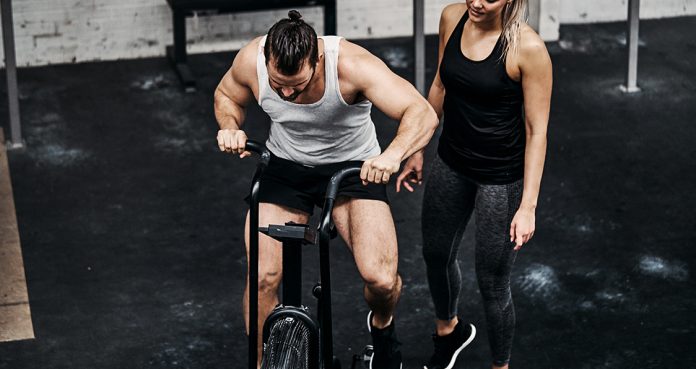
5 Rules Of Being A Great Workout Partner
How To Be A Great Training Partner
Working out with the wrong training partner can be worse than not having a workout buddy. The right training buddies are a match made in heaven and are blessed by the bodybuilding Gods, old and new.
If you have trained with lifting partners in the past, you’ll know that a bad spotter can not only make you hit a plateau but can also hamper your gains. In this article, we’ll teach you how to be a great workout partner so you can lead by example for your future training buddies.
Open-Mindedness
Patience, persistence, and a willingness to learn new techniques is the key to being a great workout partner. If you’re too rigid about following your training program, people with more experience might not be eager to train with you.
Exploring new training, nutrition, and recovery techniques can enrichen your fitness journey. Dismissing your training buddy’s suggestions too often is a sure-shot way of cutting short your partnership.
Honesty
More often than not, people let their egos get the better of them in the gym. Look around in your gym and you’ll surely see a spotter doing more work than the lifter. Even worse is the fact that the spotter doesn’t ask his training partner to drop the weight even when both of them are struggling with the weight.
The next time, before you say “it was all you” when it wasn’t, know that you’re doing your training buddy and yourself disfavor. Be honest about your form, performance, and any other aspects you could improve on.
Keep Your Ego In Check
People who train with a lifter who is on an advanced level often end up falling victim to their egos. Playing catch-up can prove expensive in the weight room. If you’re a beginner, focus on learning the right form instead of trying to lift heavier weights.
It’s your responsibility to keep your partner’s ego in check if you’re the advanced lifter. Remember, there is a thin line between ego lifting and pushing your boundaries. You shouldn’t get so conservative that you stop pushing your limits.
Accountability
The best training partners keep themselves and their buddies accountable. You should be proactive in making sure none of you misses workouts, meals and check if you are meeting your progress goals.
Accountability doesn’t end here, you are the person responsible for your and your partner’s motivation. When any of you lose the inspiration to train, you need to step in and make sure the train remains on track.
It Takes Time
While this article is about how to be a great training buddy, you’ll still have to find a person who you’ll be a partner to. Your and your partner’s training, diet, and recovery approach should fit live a glove.
We could give you tips for selecting the right training partner, but you’ll have to train with a bunch of people before you could find the right match for yourself. Be patient and willing to train with people across experience levels.
Do you train with a training partner? Let us know in the comments below. Also, be sure to follow Generation Iron on Facebook and Twitter.
*Header image courtesy of Envato Elements.
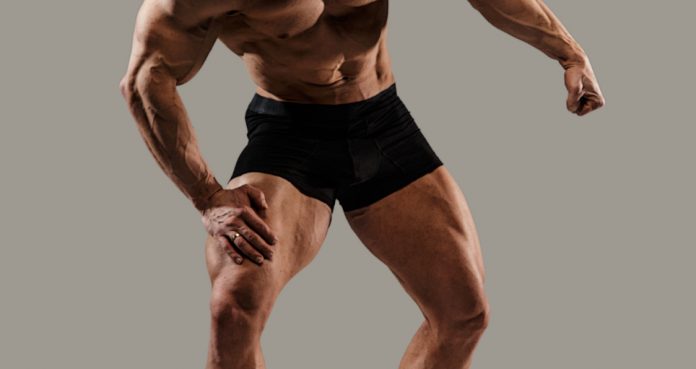
Follow This Leg Busting Workout For Monster Gains
Follow This Leg Busting Workout For Monster Gains
Shredded legs are what separate the men from the boys. Leg day can prove to be the most brutal workout for most people. Limping around after a good leg workout is normal. Legs are one-half of your body and training them can be hard and exhausting.
Look around your gym and you’ll surely see people with muscular upper bodies and tiny legs. Leg days also happen to be the most skipped workouts around the world. We can’t make you love your leg workouts, but we can surely get you results.
1. Squats – 3 Sets – 12, 10, 8 Reps
Squats are a complete leg builder. You can’t expect to build muscle mass in your legs without doing this exercise. Squats are a compound (multi joint) exercise which builds size and strength in your legs. This exercise will also make you stronger at other exercises.
Start your workouts with 12 reps, with every set increase the weights and reduce the number of reps. Make sure you have a complete ‘ass to the grass’ range of motion. Performing partial reps won’t do anything for your legs.
2. Leg Press – 3 Sets – 12, 10, 8 Reps
Leg Press can be incredibly efficient in building size and definition in your legs. This exercise helps you train your legs from different angles by changing your feet position on the platform. Placing your feet high on the platforms train your hamstrings and the lower feet position will train your quads.
Close and wide feet placement targets your outer and inner quad sweep respectively. Leg press is also the most abused equipment in the gym. People load it up with more weights than they can handle. Use appropriate weights and maintain a full range of motion.
3. Leg Extensions – 3 Sets – 20, 15, 12 Reps
Leg extensions are an isolation exercise and help focus on your quads. This exercise helps in maintaining tension on your quads throughout the motion. Establish a mind-muscle connection with your legs and squeeze the hell out of them at the top of the movement.
You don’t need to go super heavy during this exercise. Keep the motion slow and deliberate and target muscle failure at the end of every set. You should be doing both compound and isolation exercises to make the most of your leg workouts.
4. Romanian Deadlifts – 3 Sets – 12, 10, 8 Reps
This exercise targets your hamstrings. Hamstrings can be a little harder to train since you can’t see them in the mirror and it can be a little harder to establish a mind-muscle connection with them. Keep your back arches and maintain a slight bend in your knees throughout this exercise.
During Romanian deadlifts, think of your hamstrings as chains being used to lift and lower your upper body. Using more weights than you can handle can shift the tension from your hams to your back, defeating the entire purpose of this exercise.
5. Leg Curls – 3 Sets – 20, 15, 12 Reps
Legs curls are one of the most effective hamstring exercises. This is an isolation exercise where the entire focus is on your hams. Maintain a mind-muscle connection with your hams throughout this exercise and keep your reps slow and deliberate.
Since your knees are the only joints working during this exercise, going too fast can increase your chances of an injury. Squeeze your hamstrings at the top of the movement and follow a complete range of motion.
6. Standing Calf Raises – 5 Sets – 20, 15, 10 Reps
You need to treat your calves just like any other muscle group. Doing three sets at the end of a leg workout won’t do any good for your calves. Standing calf raises target your gastrocnemius muscle which is the long head of the calves.
If you don’t have a standing calf machine at your gym, you can utilize the smith machine. Just like with all the other exercises, maintain a full range of motion and squeeze your calves at the top of the movement.
7. Seated Calf Raises – 5 Sets – 20, 15, 10 Reps
Most people have tiny calves because they don’t train them well enough. You need to be doing both the standing and the seated versions of the calf raises to train them optimally. The seated calf raises train the short head of the calves known as soleus.
You can try different feet placement to train your calves from different angles. Keeping your toes together and heels apart will target the outer head of your calves and placing your heels together and toes apart will train the inner head.
Which is your favorite leg exercise? Let us know in the comments below. Also, be sure to follow Generation Iron on Facebook and Twitter.
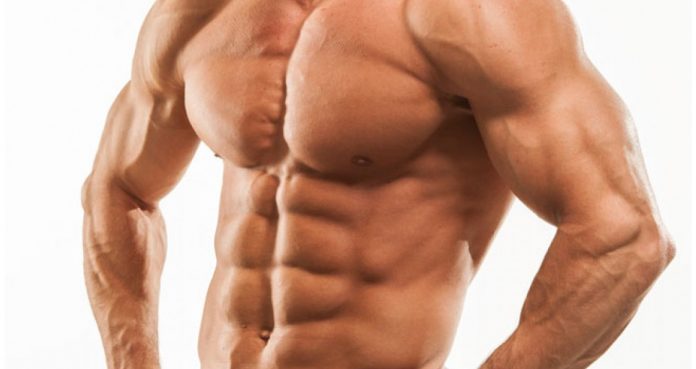
How To Reduce Your Waist Size Without Doing Ab Exercises
Reduce Your Waist Size With This One Trick
Let’s face it; many people get a gym membership to lose weight and to fit into smaller clothes. Following the advice of the broscientists, these people spend most of their time on the cardio equipment. Since you’re reading this article, chances are you’re one of them.
It isn’t long before they lose the motivation and return to their old ways. They blame their genetics for their inability to lose the excess body fat. The ‘too busy to workout’ excuse follows.
The others don’t like spending their time on the dreaded treadmill or doing crunches. Hardly do they know, it’s not their genetics. It’s the lack of knowledge which makes them quit working out altogether.
Changes In Bodybuilding In The Recent Eras
Have you wondered how bodybuilders in the golden era had small waists even when there was no fancy electronic cardio equipment? They used techniques which are long forgotten but were way more efficient than the ones employed by the pros now.
Unlike the bodybuilders today, the golden era bodybuilder focused primarily on symmetry and maintaining a narrow and tight midsection. Most of the current pro bodybuilders focus on getting big and turning into mass monsters.
The Vacuum Pose
If you haven’t heard of this, you’re already missing out. Frank Zane brought this technique into the mainstream by performing this pose on the stage. Before him, the athletes usually performed this pose in the gym as an exercise.
In this pose, you have to suck in your stomach to your spine to make it look like it has completely disappeared. When you hit the vacuum pose, you’re contracting your transverse abdominis (TVA).
The TVA runs across your waist just like a weight belt. It works like a weight belt in your daily operation. You can only perform this kind of thing with your belly.
TVA lies under the rectus abdominis and obliques and is one of the deepest abdominal muscles. Unlike most other muscles, it doesn’t connect to or move bones closer together. Many of TVA’s fibers don’t attach to the bone at all.
You need to take baby steps when it comes to performing this exercise. It will also need a lot of patience and persistence if you have never tried hitting this pose before.
There are four steps to mastering this exercise. In this article, we will take you through each step assuming you’ve never tried this exercise at this point. Each step will be harder than the previous one.
Don’t get intimidated by the four steps; you need to take one step at a time. Once you master one level the next will be relatively easy to perform and will be more efficient than the previous step in achieving your goal of a narrow waist.
Supine Vacuum
[embedded content]
This is the first step in performing the vacuum. It’s also the easiest way to suck in your stomach since the gravity will be your friend in this exercise. Confused? Let us explain.
Lie on your back with your knees bent, so your feet are touching the floor. This will help you isolate and focus on your abdominal. Once you’ve assumed this position, exhale all the air you can. This will raise your diaphragm and shrink your stomach.
This is where your TVA will have the maximum contraction, and you’ll be able to hit the vacuum pose. In the beginning, you might be unable to see or feel the vacuum, but it will come with time.
Hold your breath and perform this exercise for 15 seconds in the beginning. As you get better with time, increase the contraction time to 60 seconds. Take small breaths in between if you’re unable to hold your breath.
Quadruped Vacuum
Once you’re confident with your abilities at the supine vacuum and can perform it at will with no problems, it is time to the move on to the quadruped vacuum. If you’re performing each variation every day, it should take you a couple of weeks at most to perform them optimally.
The quadruped vacuum is called so because you perform them while having four touch points with the ground. In this exercise, you’ll be working against the gravity, and this makes this exercise harder than the previous variation.
Begin in a knee push up position so your shoulders are vertically over your elbows and your wrists and hips are over your knees. Follow the same steps as in the supine vacuum; exhale and suck in your abdominal.
This exercise is harder than the supine vacuum. So, if you were doing 60 seconds on the supine version, you should start with 30 seconds and work up to the 60 seconds mark.
Seated Vacuum
We know what you’re thinking. Isn’t the anti-gravitational version harder than the sitting on your ass version? No, it’s not because many stabilizing muscles come into play while performing this exercise.
Sit on a stable surface without leaning on to anything. Taking the support of a wall or any other surface will reduce the effectiveness of this exercise.
Exhale, pull in your navel and hold it for 30 seconds. Work your way up to 60 seconds as you get better at this exercise. Also, use unstable surfaces like a swiss ball to make this exercise harder.
Functional Vacuum
This is when you become a pro at hitting the vacuum pose. You’ll be so good you could perform it at any time, anywhere. Functional vacuum is the real life variation of this exercise.
You could be performing the vacuum pose in a subway, on your office desk or anywhere else without the people beside you knowing it. As you get better at the vacuum poses, you’ll be able to hold them for long durations.
This can result in a tighter, narrower and firmer midsection. Once you’re at this stage, you’ll find yourself vacuuming throughout the day. You won’t have to wait for long before your waist size drops.
Which ab tightening technique works the best for you? Let us know in the comments below. Also, be sure to follow Generation Iron on Facebook and Twitter.
*Header image courtesy of Envato Elements.
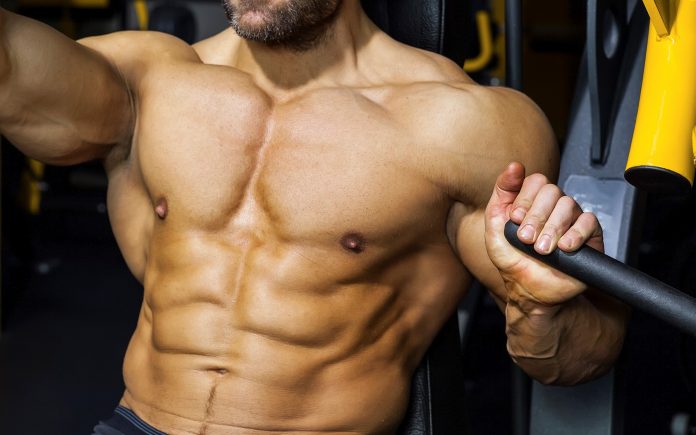
5 Tips for Finding Yourself a Workout Partner
How to Find a Good Workout Partner
If you train alone, you are leaving a lot of gains on the table. People who hit the gym with a training partner would agree a workout partner can help you take your workouts to a new level.
A good training partner can be the constant source of support (both mental and physical) and motivation you need. Finding the right training partner is easier said than done. You want a training partner who adds to your workouts and not someone who eats away your time and focus by chatting throughout your time in the gym.
Look for Someone More Advanced
You need a training partner who will push you to your limits in the gym, so it’s better to look for someone who has more experience as compared to you. A partner who is on an advanced level can teach you about the sport and help you reach your goals more efficiently.
A training partner who is on an advanced stage will probably be using advanced training techniques to make his workouts more intense. It’ll be in your best interest to piggyback on your partner’s knowledge and experience. One of you will get the better part of the deal, so it better be you.
Discipline is the Key
You’ll need army-like discipline if you want to succeed at bodybuilding. Look for people who are at the gym at the same time every day. Obviously, you too will need to be regular to the gym to take note.
Discipline doesn’t end at showing up at the gym. Your training partner should be disciplined in his workouts. You don’t want to workout with someone who would leave an exercise in the middle to go and talk to someone, miss a workout for dinner with friends, or skip the gym because the day was too long.
Your Partner Doesn’t Necessarily Need to Workout with You
It is okay if you can’t find the right workout partner in your gym. Don’t make the mistake of settling for someone who will deteriorate the quality of your workouts. You can look for someone on virtual platforms who shares the same passion for fitness as you.
These types of workout partners are great for accountability. If you have a friend who is a fitness freak, you can keep each other accountable by sharing your goals, workouts, pictures, and nutrition.
Stay Clear of Gym Bros
If you’re a beginner, you should stay away from gym bros. Gym bros love to impress the rookies with their knowledge. The only caveat being, there is a high probability the bros have no idea what they’re talking about.
If you’re a beginner, you would want to train with someone who is fitter than you, but don’t punch above your weight class. When you join a gym don’t try to train with an athlete who is getting ready to step on stage for a show.
On the other hand, if you’re an advanced athlete and can’t find someone who can teach you stuff, take someone who shows the burning desire to transform his physique under your wing.
Be Ready to Part Ways
After you find a workout partner, it isn’t necessary things will go out as you would have wanted. Problems like not being accountable to each other, the workout style and goals, indiscipline can spoil your relationship and workouts.
If you train with someone and he misses a workout, it could negatively affect your workout. If any of the problems creep up, it’s better to call it quits and go back to training alone or look for someone new. Sounds a lot like dating, right?
Do you train with a partner? Let us know in the comments below. Also, be sure to follow Generation Iron on Facebook and Twitter.
